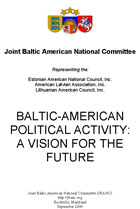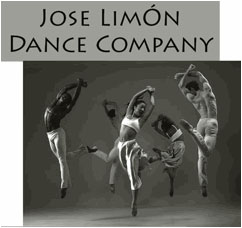by Yale Richmond
Foreign Service Life not only consists of foreign assignments but usually many years of duty in the Washington bureaucracy too. Our writer notes that these assignments can be professionally and personally rewarding as well.–The Ed.
Not so long ago it was not uncommon for Foreign Service Officers (FSO) to spend most of their careers overseas without an assignment in Washington. Before the age of terrorism, life abroad was pleasant, housing was free, servants were cheap, and with lengthy service overseas an FSO could easily become an expert on a country or a particular part of the world.
But that changed for me in 1963 when, after having served as a USIA Cultural Officer abroad for 14 continuous years, I was asked by Frank Siscoe, who had been DCM in Warsaw when I served there, to come to work for him at State where he had been appointed Director of the Soviet and East European Exchanges Staff (EUR/SES). A USIA officer couldn’t say no to such a request, so on my next assignment I found myself as Officer-in-Charge of East European Exchanges in EUR/SES, the first of four such assignments I eventually had at State, two in the European Bureau (EUR), and two in the Bureau of Educational and Cultural Affairs (CU).
From my years overseas I knew how cultural programs were conducted in the field, but new to me were the policy issues in Washington, budgets for exchanges, relations with other government agencies and the Congress, and contacts with the American public. Yet, thanks to my field experience, I was able to bring a different perspective to much of my work in Washington, and to make a number of changes in long-established policy and procedures.
A good part of my day at State was spent responding to telephone calls from American organizations and individuals interested in starting an exchange with the Soviet Union. During the détente years, such exchanges were popular, and with White House support it seemed that almost every government agency, as well as many NGOs, wanted to have its own exchange with the Soviets but didn’t know how to start. Hence they made a call to State, with an inquiry that usually ended up at my desk.
 Some of the inquirers knew little or nothing about the Soviet Union, like the state bar association which wanted to invite a Soviet lawyer to its annual convention. I told them how to go about it, but then asked if they had a particular Soviet lawyer in mind. “No,” was the reply, “we’ll take anyone.”
Some of the inquirers knew little or nothing about the Soviet Union, like the state bar association which wanted to invite a Soviet lawyer to its annual convention. I told them how to go about it, but then asked if they had a particular Soviet lawyer in mind. “No,” was the reply, “we’ll take anyone.”
More informed inquiries came from American universities that wanted to have an agreement with a Soviet university and an exchange of students, research scholars, and lecturers. However, that required a trip to the Soviet Union to finalize and sign such an agreement. And so, for only $1,000 to cover the costs of a trip for one person to Moscow, I would get another agreement between a U.S. and a Soviet university that resulted in the exchange of many Americans and Soviets for many years, and at no cost to State. Everyone was satisfied except my administrative staff, which griped that a grant of $1,000 took the same amount of work to write as a grant for $100,000.
U.S. policy on Eastern Europe at times also needed to be changed. The United States did not recognize the forced incorporation of the three Baltic States – Lithuania, Latvia, and Estonia – into the Soviet Union. Hence, we were not sending to them the U.S. exhibitions or performing arts groups that were touring the Soviet Union under the US-USSR cultural agreement.
 |
 |
When I was serving as Deputy Director of EUR/SES, I invited the Joint Baltic National Committee (JBANC) to discuss the matter, and representatives of the Estonian, Latvian, and Lithuanian communities came to meet with me at the Department. As they sat around my desk, I explained how useful it would be to have American exhibitions and performers in the Baltic States, and asked their opinions. They apparently had anticipated my question and, without any discussion, they all agreed with my proposal but, in deference to hardliners within their own organizations, they cautioned that they did not wish to be quoted as favoring the policy change. And so, in 1973, the State Department sent the Jose Limon Dance Company, the first US-sponsored cultural activity in the Baltic States.

I also prevented a diplomatic incident with the Soviet Union. One day I got a call from the Philadelphia Police Department informing me that a Soviet ice hockey team was in town and one of their players had been apprehended trying to exit a sporting goods store wearing a jacket he had tried on for size, but without paying for it. “What should we do with him,” the police asked? I told the Philly police that we didn’t want to get involved in another diplomatic standoff with the Soviets, and I counseled them to give the apprehended hockey player a lecture on shoplifting, scare the daylights out of him, and then turn him loose. That’s apparently what they did, because I never heard any more about it. But when I later suggested to my contact at the Soviet Embassy that they should warn their athletes about the risks of shoplifting, he sure enough asked if I was seeking to create an incident.
Perhaps the most lasting changes I introduced were as Director of CU’s Office of International Visitor Programs (CU/IVP), which was responsible for several exchange programs that brought foreign leaders to the United States for periods of one week to one month for familiarization and meetings with professional colleagues. In my time, it brought some 2,000 people to the United States each year from all over the world. Now called the International Visitor Leadership Program (IVLP), in FY 2010 it brought to the United States 5,200 foreign leaders and future leaders.
American ambassadors have consistently rated the IVLP as the most effective program in the State Department’s panoply of exchanges. It began on a large scale after World War II in occupied Germany and Japan as the Foreign Leader Program, and grantees came as individuals on programs designed to meet their specific needs and interests. Grants were initially for ninety days, and visitors often made coast-to-coast tours of the United States. As time became more important, and the selected leaders more prominent, the length of stay was shortened, first to sixty days, and then to thirty. During my tenure in CU/IVP, I shortened it further – seven to ten days for higher-level people who could not be away from their offices for longer periods of time.
An integral part of the IV Program, and ensuring its success, was one of those remarkable American volunteer organizations, Community Services to International Visitors (COSERV), a network of locally funded community organizations across the country. Since 1982 it has been known as the National Council for International Visitors (NCIV), and its more than 80,000 volunteers practice Public Diplomacy by arranging programs in 93 communities throughout the United States, escorting the visitors to their professional appointments, and arranging hospitality in American homes. In FY 2010 NCIV organized 3,052 community-based programs for International Visitors. Among the future luminaries welcomed in the past by COSERV and NCIV local chapters were Tony Blair, Margaret Thatcher, Anwar Sadat, Giscard d’Estaing, Indira Ghandi, Julius Nyerere, and F.W. de Klerk, and long before they became important political figures in their home countries.
Soviet visitors had been coming to the United States under the US-USSR cultural agreement since 1958, and for some of them –political leaders, writers, journalists, and others – the International Visitors Program had covered their costs. But they had been coming in groups, with a leader, and often a KGB “minder,” rather than as individuals. In the periodic renegotiation of the cultural agreement, the Soviets had consistently rejected language proposed by State that people be exchanged “in groups or as individuals.” In one negotiation, when we once more proposed to add the word “individuals,” the Soviet negotiator explained to us, with a straight face, that they had no individuals in the Soviet Union.
To accustom the Soviets to sending people as individuals, I came up with a simple idea. The State Department had been planning to initiate “multiregional” projects – groups of International Visitors from various countries around the world who were all interested in one timely issue. Rather than have one escort-interpreter for each International Visitor, there would be considerable cost savings in having only two for a small busload of eighteen to twenty visitors from different countries. Also, a better program, and more meetings with higher-level American experts, could be arranged for a group than for an individual. In addition, the foreign participants could exchange information among themselves on how their countries were handling the same problem.
The first such multiregional project was on environmental protection. When the Soviets were invited to participate and learned that their nominee would participate as an equal with others in the group, they readily agreed to join the project. The ice had been broken, and they participated with regularity in future multiregional programs. And we learned that the Soviet Union did indeed have individuals.
I ate well at State, not in the cafeteria or 5th floor snack bar, but at the embassies of countries with which we had cultural exchanges, and to which I was often invited for lunch. It was a continuing round of kasha with the Russians, bigos with the Poles, gulyas with the Hungarians, mamaliga with the Romanians, knedlicky with the Czechs, and shopska salata with the Bulgarians. Bon appétit.![]()

Yale Richmond is a writer and former Foreign Service Officer who lives in Washington, D.C. His latest books are Understanding the Americans: A Handbook for Visitors to the United States (Hippocrene Books, 2009), and From Nyet to Da: Understanding the New Russia, 4th edition (Intercultural Press, 2009). He served in Moscow as Counselor for Press and Culture, 1967-69.
